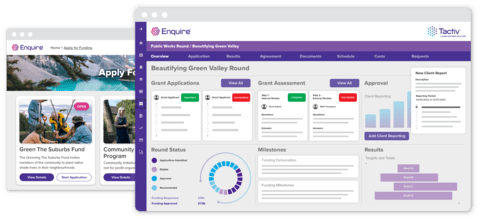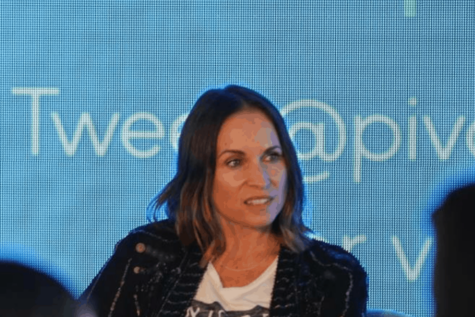Establish Clear KPIs throughout your Grant Application Processes
Grant recipients need to understand from the outset what is expected of them. Touchpoints throughout your grant application processes help with this. For example, eligibility and assessment criteria, and forms should explicitly reference the desired performance indicators. This information needs to be clear and concise so both parties understand the information required and their subsequent reporting obligations. By explicitly noting Key Performance Indicators (KPIs) upfront in the application process, grantors also help potential grantees to self-select more easily. This in turn helps streamline application administration and assessments processes. Grantors can also save time for both parties by designing application forms around the critical KPIs and desired targets. Examples of this are avoiding open ended qualitative reporting or collecting data that is not relevant.
Understanding Program Goals
Setting clear program goals at the outset of a grant application is essential for ensuring that the grantee has a clear understanding of the program’s objectives, timelines, and expectations. The grantee knows precisely what is expected of them. Consequently, they can better plan their activities, allocate their resources, and work more efficiently towards achieving those goals. By having a clear understanding of the program goals, the grantee can also prioritise their activities and avoid distractions that might steer them off course. This clear focus helps them to stay on track and ensures that their efforts are aligned with the program’s objectives.

Defining Reporting Touchpoints
Regular reporting touchpoints play a crucial role in helping the grantee stay on track towards achieving their program goals. These touchpoints provide several opportunities. It prompts the grantee to update the grantor on their progress, it helps to identify any issues or challenges they are facing, and receive feedback and support on how to overcome them. The regular reporting touchpoints also help the grantor to monitor the grantee’s progress towards achieving their program goals. Additionally, it provides guidance and assistance where needed. Before any grant reaches the reporting step however, it must be assessed, and optimised grant application processes play a critical role here too.
Consistent Assessment
An optimised grant application process can significantly streamline project assessment. It makes it easier for multiple assessors to review applications quickly and efficiently. Optimisation of the grant application process includes the use of online application platforms, standardised application forms, and clear guidelines for applicants. These optimisations help reduce inconsistencies in the application review process and ensure that all grant applications are reviewed in a fair and objective manner.
Technology also plays a significant role in streamlining project assessment. For example, grantors can implement an online grant management system. Among other things, it allows multiple assessors to access and review grant applications simultaneously. This system can include features such as collaborative review tools that enable assessors to provide comments and feedback on applications in real-time. It can also make the use of automated scoring algorithms that enable assessors to rate applications based on predefined criteria. The use of such tools reduce the time and effort required for project assessment. As a result, grantors can quickly identify the most promising applications and move them through the funding process.
Sign up now for a free trial of Enquire
Reduce the Reporting Burden
This process is further streamlined when the grantor structures payment milestones linked to the achievement of KPIs. This also further incentivises grantees to meet their targets. Grants that involve milestone reporting linked to payments should state this up front. This lets grantees know how and when data should be reported and how this impacts the overall grant relationship. Linking KPIs to milestones in the application form ensures grantees know before they start what data they need to track and the information they need to submit. Information across reporting periods remains consistent as the KPIs remain the same. Tactiv’s Enquire Fund Management software offers a highly configurable system allowing grantors to establish program KPIs. Therefore data can be aligned and collected automatically. Application forms can include the data fields to capture grantee responses and continue once the grant has been awarded to support milestone and acquittal reporting.
In addition to reducing the reporting burden, focusing on KPIs enables grantors to better evaluate the effectiveness of the program. KPIs provide clear metrics that are used to measure progress towards program objectives and track outcomes. By collecting and exporting KPI data into reports, grantors provide stakeholders with insights into the program’s performance, highlight successes, and identify areas for improvement. Data visualisation tools, such as a data warehouse integrated with business intelligence tools, can be used to present KPI data in a meaningful way. These tools enable grantors to visually represent KPI data and present it to stakeholders in a clear and concise manner. This visual representation of data can be used to identify trends, outliers, and patterns in the data. That, in turn, helps grantors to better understand the program’s performance and potential impact.
➔ Free Download: Enquire’s Impact Reporting and Performance Measurement Capabilities
Furthermore, the KPI data collected and analysed in grant reports can be utilised by grantors to inform future grant application processes. By reviewing the KPI data, grantors can identify areas for improvement in the program design. Additionally, the can identify grant management best practices that can be incorporated into future program iterations. This can result in more effective programs that produce better outcomes and greater impact.
How To Manage Grant Applications in Enquire
The Tactiv team offer a wealth of experience in how Enquire can best be configured to ensure application forms support the needs of both parties. It’s a significant factor in boosting program performance.
Want to know more? Connect with our team to streamline your next grant application formand enhance your grant management and outcome reporting. Alternatively, learn more about Enquire here.







